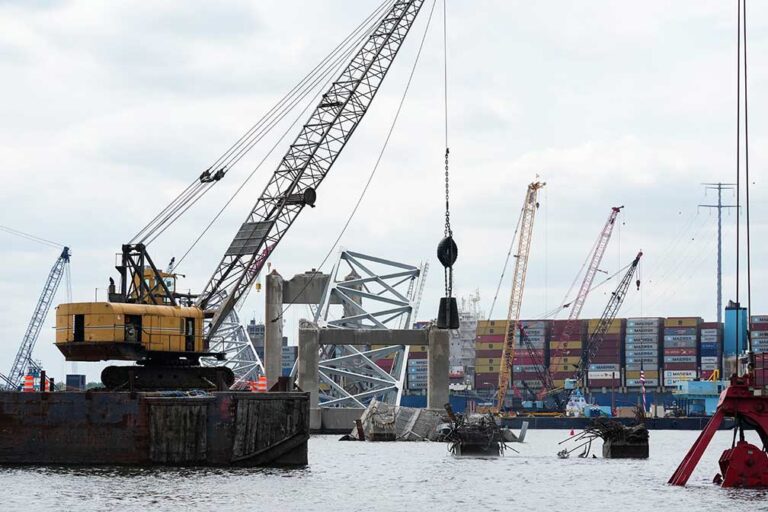ANNAPOLIS, Md. — Maryland plans to rebuild the Francis Scott Key Bridge in just over four years at an estimated cost between $1.7 billion and $1.9 billion, a state transportation official said Thursday, May 2.
The state plans to build a new span by fall of 2028, said David Broughton, a spokesman for the Maryland Department of Transportation. He said the cost estimate is preliminary, and detailed engineering specifics have not been confirmed.
The Maryland Transportation Authority said Thursday that the state’s treasurer filed a claim on the day of the bridge’s collapse “against our $350 million property policy and put on notice our $150 million liability policy first tier carrier on behalf of MDTA.”
“We expect the full property policy to be paid very shortly,” the agency said in a news release.
The broker for the bridge’s insurance policy confirmed Thursday that a $350 million payout will be made to the state of Maryland in what is expected to be the first of many payouts related to the collapse.
Chubb, the company that insured the bridge, is preparing to make the $350 million payment, according to WTW, the broker. Douglas Menelly, a spokesperson for WTW, on Thursday confirmed plans for the payout, which was first reported by The Wall Street Journal. Chubb did not immediately respond to a request for comment Thursday.
The Dali container ship has been stationary amid the wreckage since the collapse, but crews plan to refloat and remove the ship, allowing more maritime traffic to resume through Baltimore’s port. Officials expect to have it removed by May 10, according to a Port of Baltimore news release.
Salvage and demolition crews were still working around the clock to clear wreckage from the collapse site. They’re now focused primarily on freeing the Dali from a massive steel span that came crashing down on the ship’s bow.
That will allow the ship to be refloated and guided back into the Port of Baltimore. It will also allow most maritime traffic to resume through the busy East Coast port.
On Thursday morning, crews were preparing for a controlled demolition that will break down the largest remaining span and send it tumbling into the water. Then a massive hydraulic grabber will lift the resulting sections of steel onto barges.
The hydraulic grabber, which officials have called the largest in the country, was also in motion Thursday morning. Moving ever so slowly, the giant claw descended into the depths of the Patapsco River and emerged with a steel beam in its trusses. It was operating in tandem with the Chesapeake 1000, one of the largest cranes on the Eastern Seaboard.
By Brian Witte, The Associated Press. Associated Press journalists Denise Lavoie in Richmond, Virginia, and Lea Skene in Baltimore, contributed to this report.
The Associated Press is an independent global news organization dedicated to factual reporting. Founded in 1846, AP today remains the most trusted source of fast, accurate, unbiased news in all formats and the essential provider of the technology and services vital to the news business. The Trucker Media Group is subscriber of The Associated Press has been granted the license to use this content on TheTrucker.com and The Trucker newspaper in accordance with its Content License Agreement with The Associated Press.






